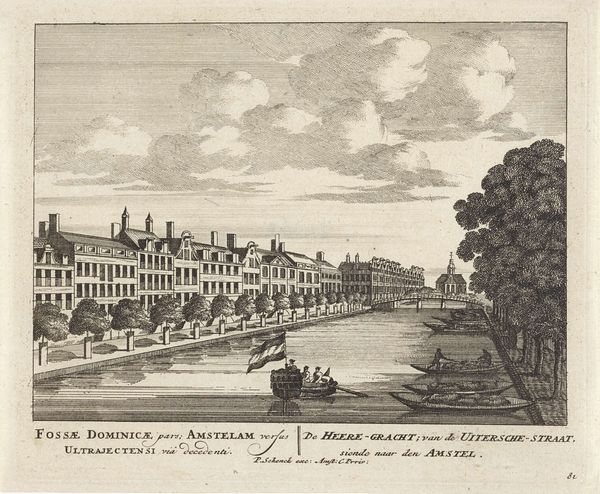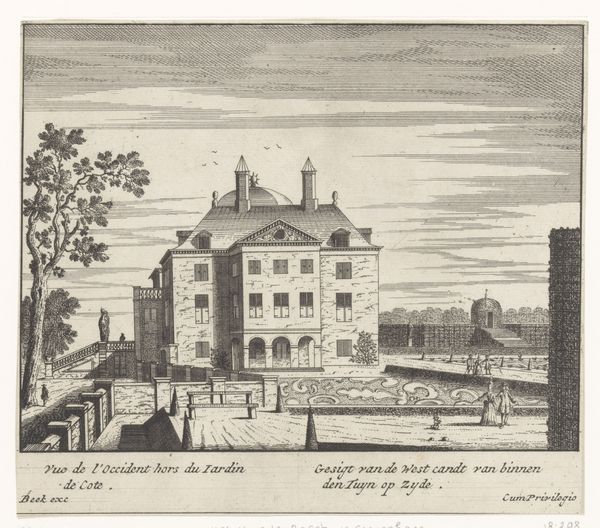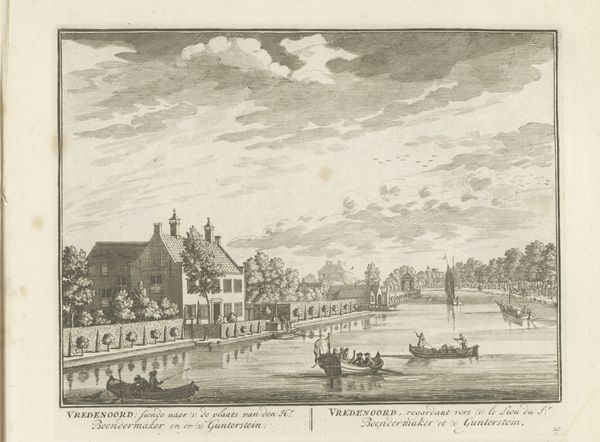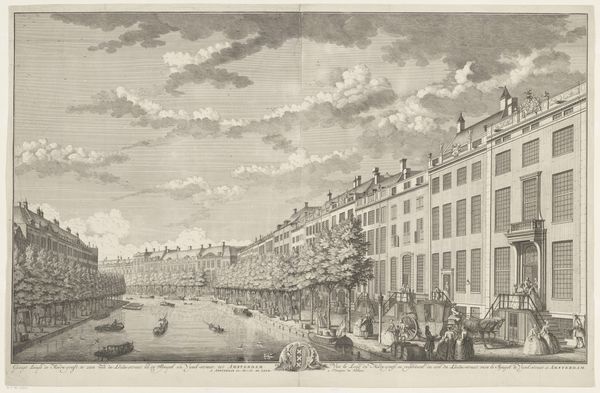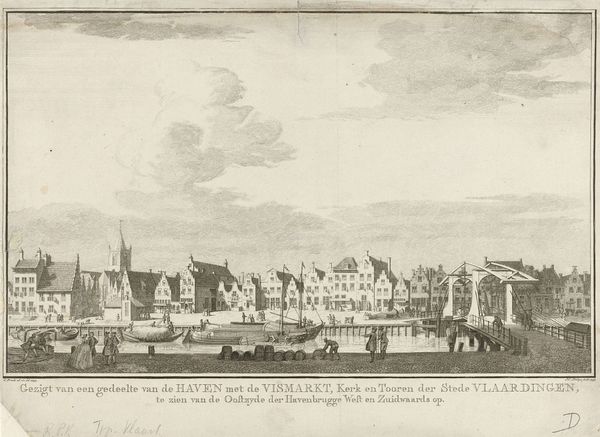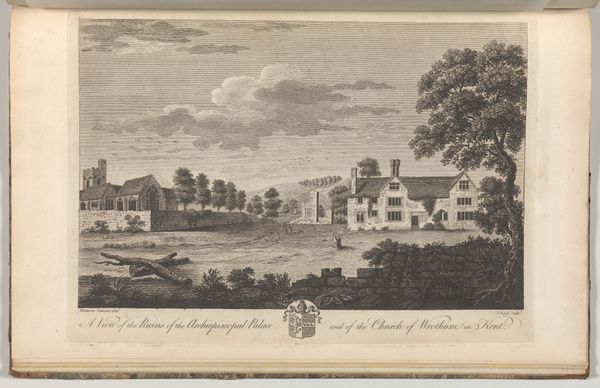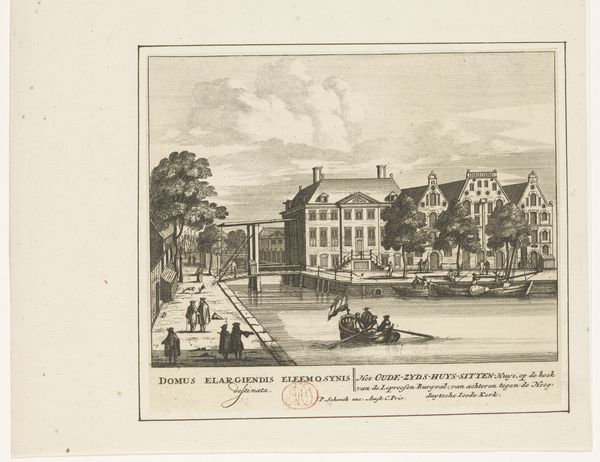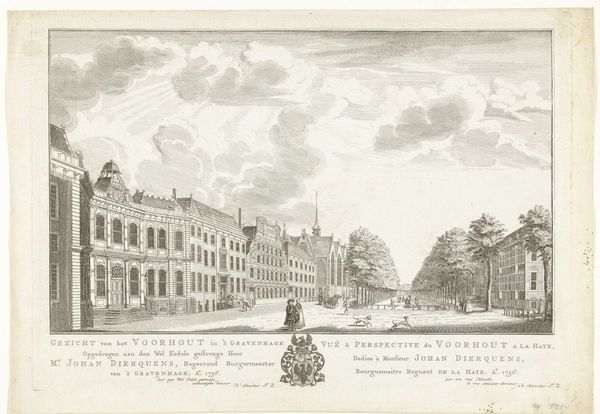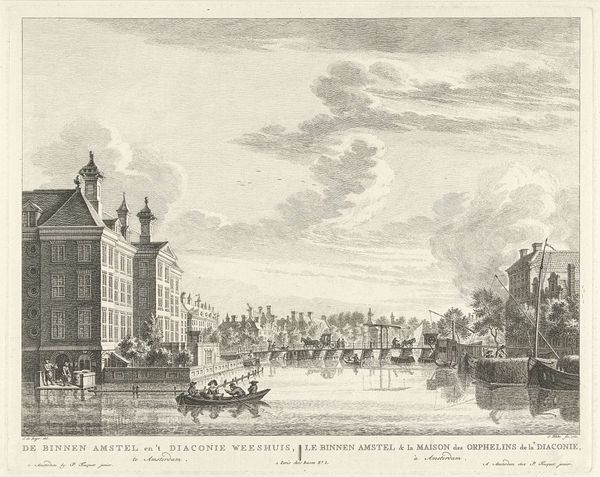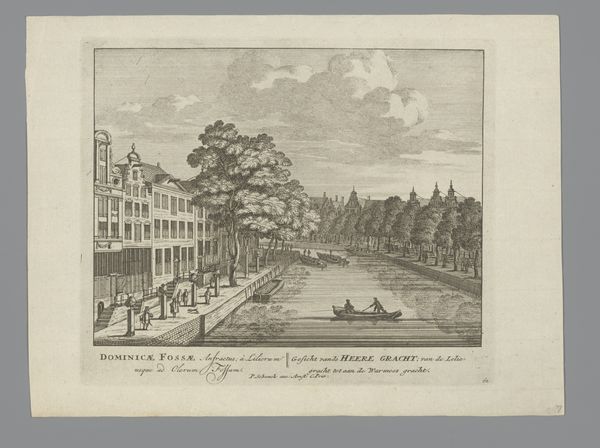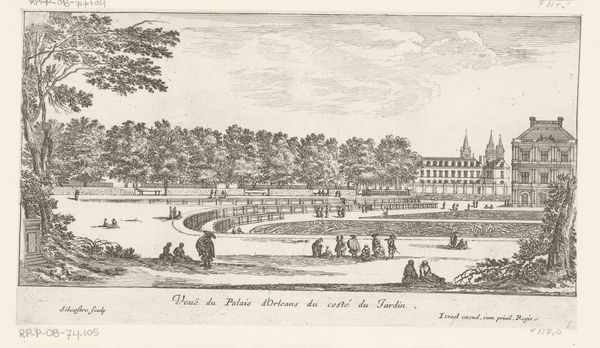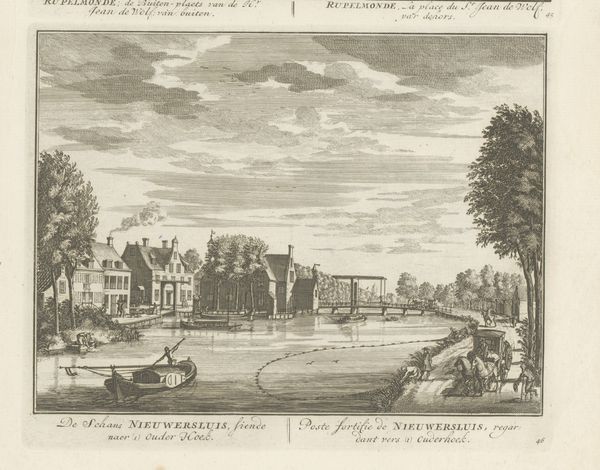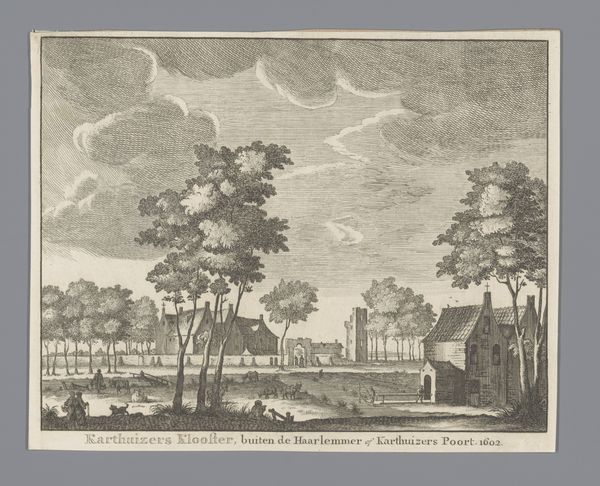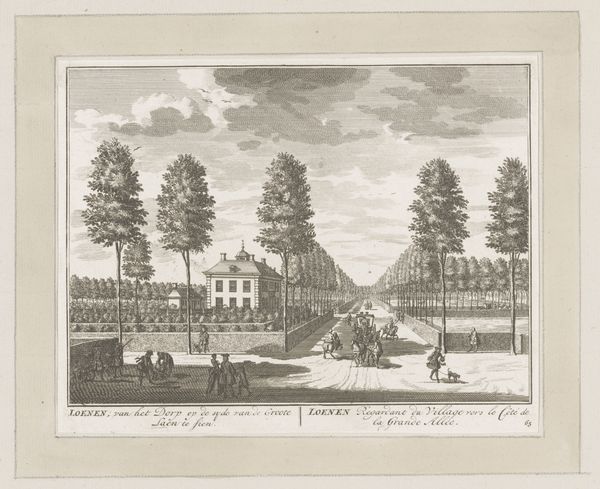
Gezicht op de Herengracht te Amsterdam, gezien vanaf de Utrechtsestraat 1694 - 1697
0:00
0:00
print, engraving
#
dutch-golden-age
# print
#
old engraving style
#
landscape
#
cityscape
#
genre-painting
#
engraving
#
realism
Dimensions: height 129 mm, width 171 mm
Copyright: Rijks Museum: Open Domain
Curator: Looking at this print, the precision of the lines immediately catches my attention. The title, "Gezicht op de Herengracht te Amsterdam, gezien vanaf de Utrechtsestraat," translates to "View of the Herengracht in Amsterdam, seen from the Utrechtsestraat." It dates back to between 1694 and 1697 and was created by Jan van Call. It presents a cityscape rendered in impressive detail for the time. Editor: It evokes such a sense of calm, doesn't it? The light plays softly across the canal, and there's a rhythmic repetition in the facades of the houses, which provides an understated commentary on social stratification of the area as well. The material reality speaks to economic power; row after row. The clouds bring the landscape and the hand made work together; their rendering softens what could be rigid architecture into a more poetic composition, highlighting the skills and materials employed in the image's creation. Curator: That rhythm you mentioned is key to understanding Amsterdam at this time. The Herengracht was a symbol of wealth and power, the place where the city's elite resided. The engraving process itself, cutting into metal, echoes the calculated investments made by the city’s mercantile class, quite literally etching their legacy into the urban fabric and cultural record. Consider the social implications; the physical construction of this canal and these houses reflected, and perhaps reinforced, a certain social hierarchy. Editor: Absolutely, and analyzing the print’s materiality underscores those connections. Look at the uniformity in style in the structures pictured in the artwork, but look at the sky and other small textural points that give away it was a work created by hand and mind. How labor, skill, and design converge in the printmaking, and its accessibility allowed this message of Amsterdam's economic dominance to circulate widely. Also the boats on the river; these remind us of the waterways of commerce as a means to understand the architecture on the canal’s edge. Curator: And how that circulation contributed to a sense of shared identity, especially among the ruling classes. This wasn't just a pretty picture, it was a carefully constructed representation of a society, with all the nuances and power dynamics embedded within it, like wealth but also exclusion. The "Dutch Golden Age" only for some in terms of social access and cultural relevance. Editor: Right, it's easy to get lost in the aesthetic charm but this exploration really brings us to consider how visual culture is enmeshed in broader material and socioeconomic networks. Curator: Indeed. Exploring this artwork with attention to material and socio-historical context has really sharpened my understanding of the layers within even a seemingly straightforward cityscape. Editor: Mine as well; examining it through this dual lens of labor and critical social constructs gives "Gezicht op de Herengracht" a new dimension.
Comments
No comments
Be the first to comment and join the conversation on the ultimate creative platform.
